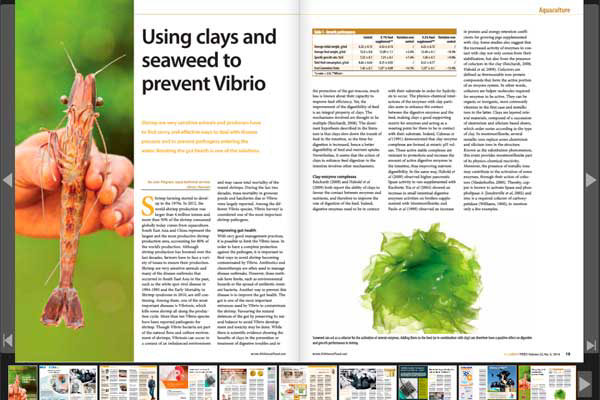AllAboutFeed magazine: November issue now online

The November issue of AllAboutFeed is now available online. This issue has articles on the newly established company AB Neo, the use of clays and seaweed in shrimp, how vacuum dehydration can improve feed pellet quality and we delve into the world of low glycemic pet foods in Anton Beynen’s latest column.
Dejan Miladinovic from the Norwegian University of Life Sciences and Centre for Feed Technology (FôrTek) in Norway explains how vacuum dehydration can improve the feed pellet quality. “Removing the moisture from animal feed pellets can be done by several means. One method is the vacuum dehydration technique. This drying technique – already used a lot in the food processing industry- was put to the test by our institute,” Miladinovic explains in his article. The vacuum technique is very well suited for products with a high water content, such as extruded fish feed and pet food. Products that are subjected to high air temperatures.
Diet can prevent Vibrio disease
In this issue of AllAboutFeed, we will also touch on Vibrio disease in shrimp and how certain feed ingredients can prevent this. “By adding a product, containing clay and seaweed, to the shrimp diet we found an improved digestive status of the shrimps, as shown by the lower Vibrio count in the hepatopancreas and the intestine and the improved survival rate of the juveniles,” the author of the article explains. Learn more about this on page 18 of this issue.
New company to focus on neonates
In an article on page 26 of this issue, Paul Toplis reveals the new company AB Neo, part of the UK based AB Agri group. Neo stands for neonates and its drive is to make specialty products for young animals. Toplis is part of the new team explains: “The neonate phase in an animal’s life can have a significant effect on growth rate, feed conversion and milk production all of which have financial implications. It’s all about increased incomes from such things as reaching slaughter sooner or heavier or more milk production,” Toplis explains.
What about low glycemic pet foods?
In his bimonthly column, Anton Beyen from Vobra Special Pet Foods explains the latest trends in the pet food sector. In his new column, Anton takes a closer look at low-glycemic pet food. “There is no scientific proof that a low- versus high-glycemic diet reduces the development of either condition in dogs and cats. Labels do not declare an estimate of the food-induced glycemic response. When indirect evidence for health benefits is accepted, then the glycemic status of pet foods and that for optimum efficacy are worth knowing.” The column can be found on page 11 of this issue.
To see what other interesting articles are featured in this edition, click here to register for free to be able to read the full magazine online.











